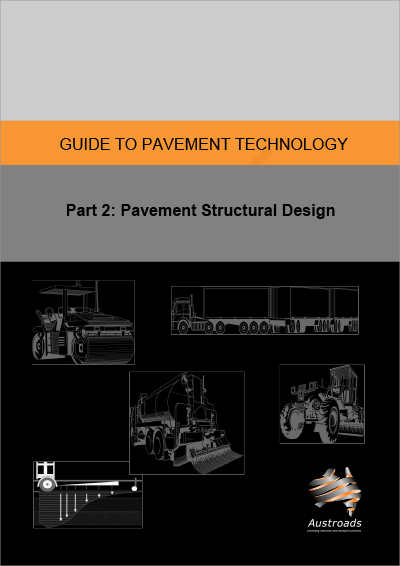Pavement

- Publication no: AGPT02-12
- ISBN: 978-1-921991-11-0
- Published: 6 March 2012
- Edition: 3
- Superseded
- PDF (free) Download
Part 2 of the Austroads Guide to Pavement Technology - Pavement Structural Design contains procedures for the design of flexible pavements consisting of unbound granular materials, flexible pavements that contain one or more bound layers, and rigid pavements, such as concrete.
This is the third revision of this guide and features substantial changes in editorial as well as technical changes in sections.
This guide is ideal for use when designing flexible and rigid pavements for conventional traffic. It is also used to develop design charts for flexible pavements for specific conditions as required by the user (example charts are included in the Guide for specific design input and performance parameters).
An integral part of the pavement design process is an assessment of how well the outcome of the design, the constructed pavement, will perform. Because of the many factors which must be evaluated to design pavements, there is no absolute certainty that the desired performance will be achieved. This part provides guidance on how to design projects to a desired reliability of outlasting the design traffic. This part covers the assessment of input parameters needed for design, design methods for flexible and rigid pavements and gives guidance to the economic comparisons of alternative pavement designs.
Designers should note the following limitations of the part in terms of its scope:
- The design procedures described apply for pavements subjected to a minimum design traffic loading of 105 ESA which is for moderate-to-heavily trafficked roads. For lightly-trafficked roads environmental distress has a more significant effect on pavement performance.
- Whilst the mechanistic procedures presented in this part can be applied to any pavement type and traffic load, the pavement types addressed relate to public roads subjected to normal highway traffic only – and not to industrial pavements subjected to off road vehicle loads such as fork lifts and straddle carriers.
- The procedures in the guide are applicable to traffic with normal transverse load distribution (wander) within traffic lanes. For example, standard deviation of truck traffic wander of 200 mm to 350 mm has been reported (Jameson, Sharp & Vertessy 1992a). Caution is advised in using the Guide for pavements with truck wander different from normal highway loading.
